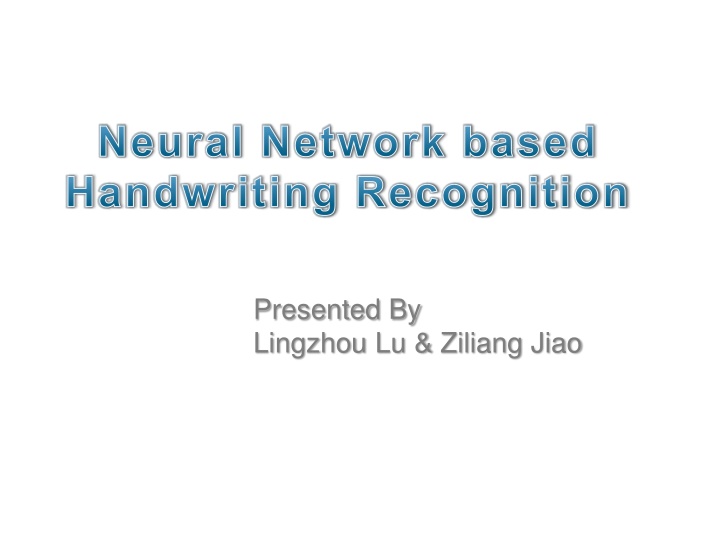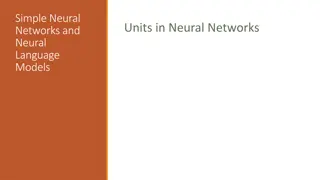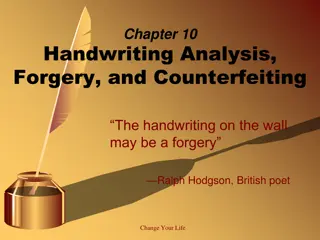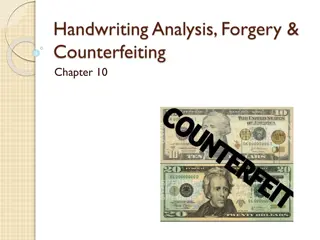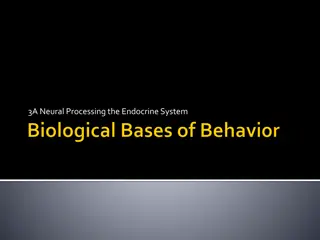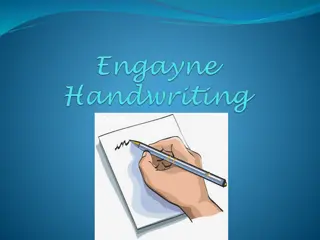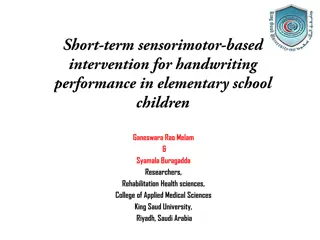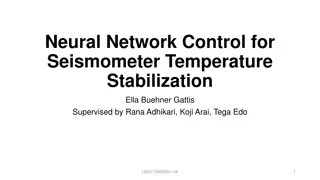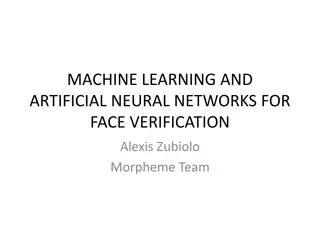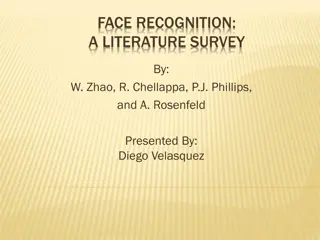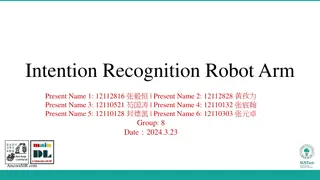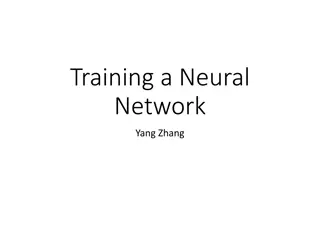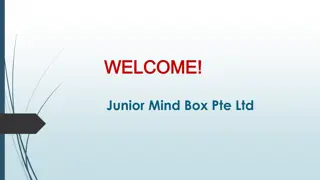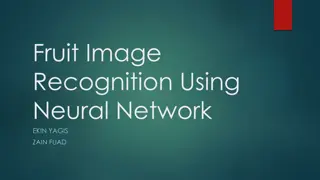Neural Network Handwriting Recognition System Development
This project focuses on building a neural network-based system for handwriting recognition presented by Lingzhou Lu and Ziliang Jiao. It addresses the challenges of diverse writing styles, sizes, strokes, and styles to generalize the recognition system. The approach involves image acquisition, pre-processing, segmentation, feature extraction, and classification, utilizing the UniPen dataset. Techniques like pre-processing with the Aforge library and feature extraction from character images are highlighted. The experimentation involves neural network training with backpropagation, utilizing parameters like activation functions, training epochs, learning rate, momentum rate, and termination conditions, along with distortion simulations.
Download Presentation

Please find below an Image/Link to download the presentation.
The content on the website is provided AS IS for your information and personal use only. It may not be sold, licensed, or shared on other websites without obtaining consent from the author.If you encounter any issues during the download, it is possible that the publisher has removed the file from their server.
You are allowed to download the files provided on this website for personal or commercial use, subject to the condition that they are used lawfully. All files are the property of their respective owners.
The content on the website is provided AS IS for your information and personal use only. It may not be sold, licensed, or shared on other websites without obtaining consent from the author.
E N D
Presentation Transcript
Neural Network based Handwriting Recognition Presented By Lingzhou Lu & Ziliang Jiao
Domain Optical Character Recogntion (OCR) Upper-case letters only
Motivation Build our own handwriting recognition system that can recognition a simple sentence or phrase
Problems Each person has an unique writing style Written characters varies in sizes, stroke, thickness, style Generalization of the recognition system largely depends on the size of training set
Approach Image Acquisition Pre-processing Segmentation Feature Extraction Classification & Recognition
Unipen datasets Contains 16414 samples of isolated upper case letters Around 600 full sets of 26 alphabetic letters Only 300 are used 70% training set 10% validating set 20% testing set Problems Missed labeled Mixed with Cursive data Unreadable data Problematic cases in Unipen
Pre-processing Using Aforge library Minimize the variability of handwritten character with different stroke thickness, color, and size Convert to binary image Cropped Image Skeletonization
Feature Extraction Extracting from the raw data the information which is most relevant for classification purposes. Every character image of size 90x60 is divided into 54 equal zones, each of size 10x10 pixels
Experiement Neural Network using back propagation Network parameters ANN representation: 69-100-26 Activation function: Hyperbolic tangent/Sigmoid Training epochs: 10000 Learning Rate: 0.0005 Momentum Rate: 0.90 Terminated condition: validation set MSE
Experiement Distortion Similar to mutation in GA 0.01 possibility at every epoch Every image has 50% chance to be distorted Example of distortion
Result Distortion YES NO Training Set 92% 97% Testing set 83% 75%
Conclusion Distortion helps generalize recognition system Better result can be yield with larger training Validation set can be use to avoid overfitting and find the best generalized result
Future Work Expand dataset Look for better segmentation and feature extraction method Apply GA to feature input to find out the possible better solution
